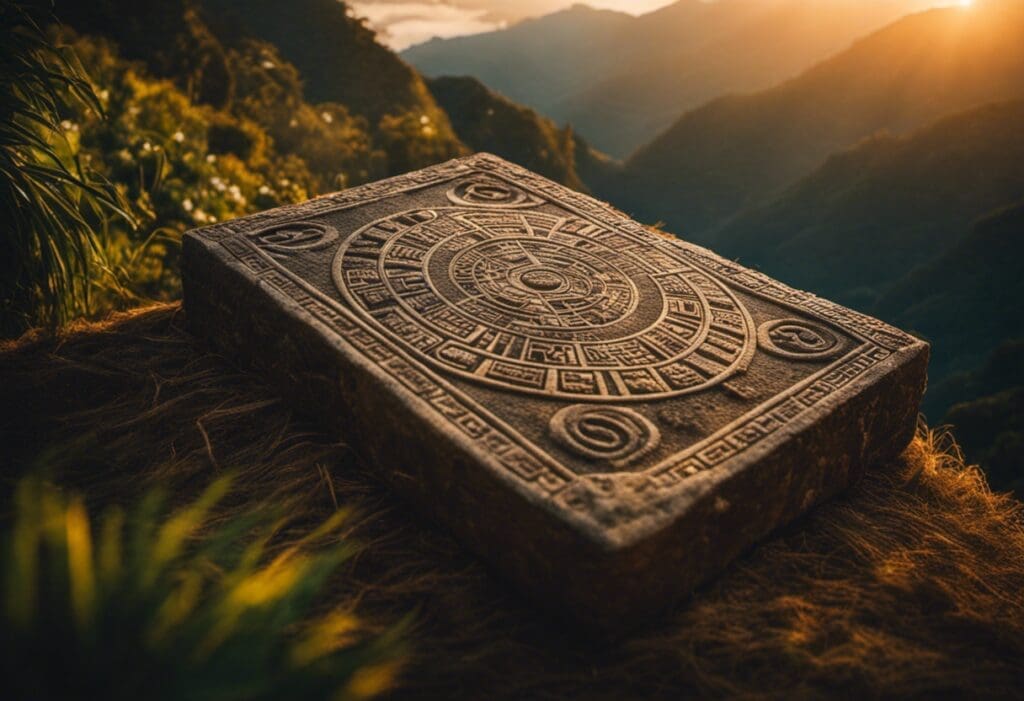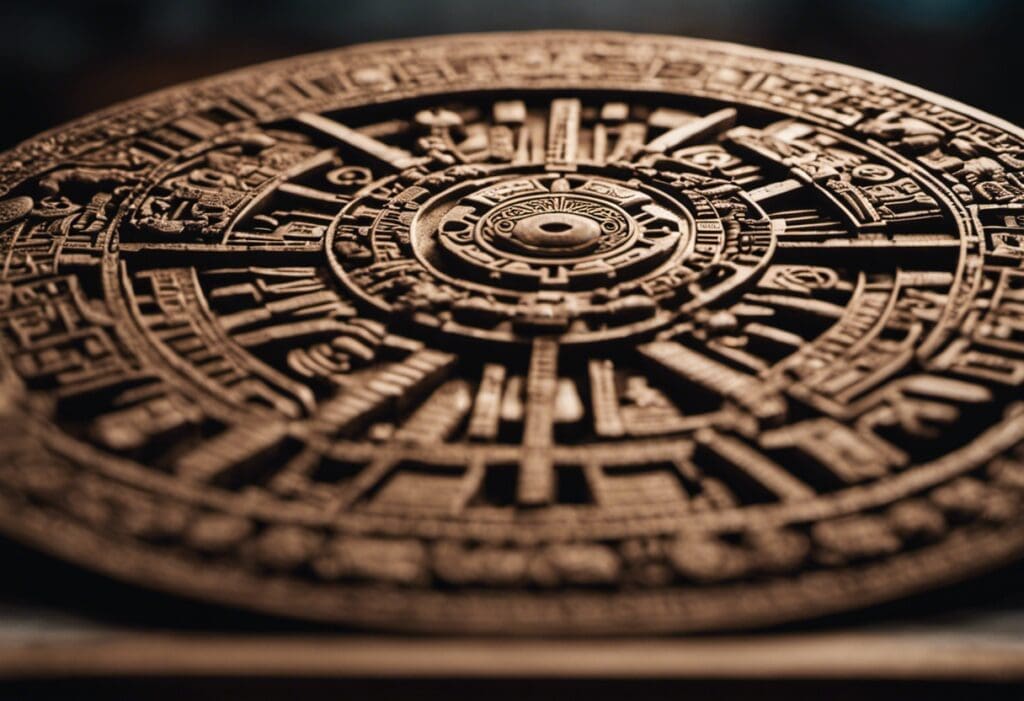Have you ever wondered how ancient civilizations celebrated and honored the passage of time?
In this article, we delve into the rich and vibrant traditions of the Inca people, focusing on the main festivals of their calendar. Drawing on historical evidence and archaeological findings, we explore the origins and significance of festivals such as Inti Raymi, Qoyllur Rit’i, and Capac Raymi.
Join us on a journey through time as we uncover the cultural and spiritual importance of these captivating celebrations.
Key Takeaways
- The Inca calendar, known as Tawantinsuyu, was based on astronomical observations and agricultural cycles.
- The Inti Raymi festival celebrated the power and significance of the sun in agricultural and spiritual practices and took place on the winter solstice.
- The Qoyllur Rit’i festival celebrated Andean mountain deities and marked the beginning of the agricultural season.
- The Inti Watana festival celebrated the worship and reverence of the sun, the most important deity in Inca cosmology, and included various rituals and ceremonies.
Origins of the Inca Calendar


The origins of the Inca calendar can be traced back to the ancient Andean civilizations. The Inca civilization, which thrived from the 13th to the 16th century in the Andean region of South America, had a deep reverence for time and its cyclical nature. The Inca calendar, known as the Tawantinsuyu, played a significant role in their cultural practices and beliefs.
The Inca calendar was based on astronomical observations and the agricultural cycles of the region. It consisted of two main components: the solar calendar and the lunar calendar. The solar calendar, known as Inti Raymi, was based on the movements of the sun and marked the solstices and equinoxes. It was closely tied to agricultural practices, as it helped determine the appropriate times for planting and harvesting crops.
The lunar calendar, known as Wasiq’ati, was based on the cycles of the moon and was used for religious and ceremonial purposes. It helped determine the timing of important festivals and rituals, such as the Capac Raymi, a celebration of the Inca emperor and his divine connection to the sun.
The Inca calendar held great significance for the Inca civilization. It not only guided their agricultural practices but also played a crucial role in their religious and ceremonial rites. The calendar reflected the interconnectedness of the natural world and the spiritual realm, reinforcing the Inca’s beliefs in the divine and their place within the cosmic order.
Inti Raymi: The Festival of the Sun


During Inti Raymi, the Festival of the Sun, the Inca civilization celebrated the power and significance of the sun in their agricultural and spiritual practices. This festival, which took place on the winter solstice, was one of the most important events in the Inca calendar.
The celebration involved a grand procession known as the Inti Raymi procession, where the Inca king and his entourage would make their way to the ceremonial site of Sacsayhuaman, located near the Inca capital of Cusco.
The Inti Raymi procession was a spectacle of vibrant colors and traditional costumes. The Inca king would be dressed in elaborate garments made from the finest textiles, adorned with gold and precious stones. The nobles and priests accompanying him would also wear ornate costumes, showcasing their status and importance. These traditional costumes were not only a means of displaying wealth and power but also served as a way to connect with the spiritual realm and honor the sun god, Inti.
The festival itself would involve various rituals and ceremonies, including offerings and sacrifices to the sun god. These rituals were performed to ensure a bountiful harvest and to express gratitude for the sun’s life-giving energy. Inti Raymi was not just a celebration of the sun’s power, but also a time to reflect on the Inca civilization’s close relationship with nature and their dependence on the sun for their survival.
Qoyllur Rit’i: The Feast of the Snow Stars


Throughout the Inca calendar, Qoyllur Rit’i: The Feast of the Snow Stars, held in the month of May, was a significant festival that celebrated the Andean mountain deities and marked the beginning of the agricultural season. One of the notable aspects of this festival is the elaborate traditional costumes worn by the participants.
Qoyllur Rit’i is a unique celebration that takes place in the Sinakara Valley, near the Ausangate Mountain in the Cusco region of Peru. It brings together thousands of Quechua-speaking pilgrims from different communities, who travel long distances to pay homage to the mountain deities. The festival is a fusion of indigenous Andean beliefs and Catholicism, showcasing the syncretism that occurred during the Spanish colonization.
During Qoyllur Rit’i, participants dress in vibrant and intricate traditional costumes, reflecting their cultural heritage and identity. These costumes often incorporate colorful textiles, feathered headdresses, and elaborate masks. The outfits are meticulously crafted, with each detail symbolizing a specific aspect of Andean cosmology and spirituality.
The traditional costumes worn during Qoyllur Rit’i not only serve as a visual spectacle but also play a significant role in reinforcing cultural identity and preserving ancestral traditions. They reflect the deep connection between the Andean people and their natural surroundings, highlighting the reverence they hold for the mountains and the spiritual beings associated with them.
Inti Watana: The Festival of the Sacred Sunstone


The Festival of the Sacred Sunstone, known as Inti Watana, held great significance in the Inca culture. This festival revolved around the worship and celebration of the sun, which was considered the most important deity in Inca cosmology.
During Inti Watana, various rituals and ceremonies were performed to honor the sun and ensure its benevolence, including offerings, dances, and processions.
The festival served as a time of reverence and gratitude towards the sun for its role in sustaining life and providing abundance to the Inca civilization.
Inca Sunstone Significance
An important aspect of Inca culture was the significance of the Inca Sunstone, which was celebrated during the festival known as Inti Watana: The Festival of the Sacred Sunstone.
The Inca Sunstone, also known as Intihuatana, was a sacred stone that held great importance in Inca cosmology. It was believed to be a physical representation of the sun and served as a connection between the spiritual and physical realms. The interpretation of the Inca Sunstone’s symbolism varied, but it is commonly believed to represent the sun’s position during the solstices and equinoxes, as well as the Inca’s reverence for the natural world.
The festival of Inti Watana was a time of celebration and gratitude for the sun’s vital role in sustaining life and agricultural prosperity. During this festival, offerings were made to the Inca Sunstone, and rituals were performed to honor the sun and ensure its continued blessings upon the Inca Empire.
Rituals During Inti Watana
During Inti Watana, individuals and communities came together to perform various rituals, ensuring the blessings of the sacred sunstone upon the Inca Empire.
These rituals held great significance in Inca culture, as the sun was considered the most important deity and the source of life.
One of the central rituals during Inti Watana involved the lighting of fires in honor of the sun. The Inca people believed that the smoke from these fires carried their prayers and offerings to the sun god, Inti.
Additionally, priests conducted elaborate ceremonies, offering sacrifices and performing divinations to seek the favor and protection of the sun god.
These rituals were performed with utmost reverence and were believed to strengthen the connection between the Inca Empire and the divine powers of the sun, ensuring prosperity and well-being for the entire community.
Capac Raymi: The Festival of the Inca Emperor


Capac Raymi marks the grandeur and authority of the Inca Emperor’s festive celebration. This significant event was held annually in the capital city of Cusco, Peru, during the winter solstice. The festival lasted for several days and was dedicated to honoring the Sun God, Inti, as well as celebrating the power and prestige of the Inca Emperor.
Elaborate ceremonies: Capac Raymi was characterized by elaborate ceremonies that showcased the Emperor’s authority and divine connection. The Emperor would don his finest attire, including the iconic headdress adorned with feathers and precious stones, and perform rituals to ensure the prosperity and protection of the Inca Empire.
Processions: The festival featured grand processions, where the Emperor and his entourage paraded through the streets of Cusco. This allowed the people to witness the splendor and magnificence of their ruler, reinforcing the Emperor’s status as a divine figure.
Offerings and sacrifices: Capac Raymi involved offerings and sacrifices to the gods, particularly Inti. The Emperor would present valuable gifts, such as gold and silver, as offerings to ensure the Sun God’s favor and blessing upon the empire. Animal sacrifices were also performed to appease the gods and ensure a bountiful harvest.
The Capac Raymi celebrations were not only a time of joy and festivity but also a display of the Inca Emperor’s authority and divine connection. Through elaborate ceremonies, processions, and offerings, the festival served as a reminder of the Emperor’s power and the importance of maintaining a harmonious relationship with the gods.
Raymi Llaqta: The Festival of the People


The Raymi Llaqta festival holds great cultural significance within the Inca civilization. It is a celebration that involves various traditional rituals and dances, showcasing the rich heritage of the Inca people.
Through these practices, the festival serves as a way for the Inca community to preserve their traditions and pass them down to future generations.
Cultural Significance of Raymi
Raymi, a prominent cultural event in the Inca calendar, holds great importance for the indigenous communities. This festival, also known as Raymi Llaqta or the Festival of the People, is deeply rooted in the cultural traditions and historical significance of the Inca civilization.
Here are three key reasons why Raymi is culturally significant:
- Preservation of Cultural Traditions: Raymi serves as a platform for showcasing and preserving the rich cultural traditions of the Inca people. Through traditional dances, music, and rituals, the festival allows the indigenous communities to pass down their ancestral knowledge and customs to future generations.
- Celebration of Inca Heritage: Raymi is a time for the indigenous communities to celebrate and honor their Inca heritage. It highlights their connection to the land, their ancestors, and their spiritual beliefs, fostering a sense of pride and identity among the Inca descendants.
- Commemoration of Historical Events: Raymi also commemorates significant historical events in Inca history, such as the winter solstice and the harvest season. These events are considered crucial for agricultural practices and are marked with ceremonies and rituals, reinforcing the importance of nature and the cycle of life in Inca culture.
Traditional Rituals and Dances
One of the most notable aspects of Raymi Llaqta, the Festival of the People, is the array of traditional rituals and dances that are performed during the festivities.
These traditional rituals hold great cultural significance and are deeply rooted in Inca traditions.
One such ritual is the Kalla Raymi, which involves the offering of food and drinks to Pachamama, the Earth Mother, as a way of giving thanks for the bountiful harvest.
Another important ritual is the Inti Raymi, which honors the sun god Inti and celebrates the summer solstice.
During this ritual, participants dress in elaborate costumes and perform intricate dances that depict the relationship between humans and the sun.
These cultural dances not only entertain the spectators but also serve as a way of preserving and passing down Inca traditions and teachings from one generation to the next.
Warachikuy: The Ritualistic Warrior Festival


Warachikuy, a highly revered festival in the Inca calendar, commemorates the rigorous training and selection process that prospective warriors underwent. This festival holds great significance in Inca culture as it not only celebrated the valor and bravery of warriors but also served as a means of identifying and recruiting new warriors for the empire’s army.
The Warachikuy festival was characterized by several rituals and traditions, each playing a specific role in the selection process. These included:
- Physical Tests: Prospective warriors were subjected to a series of physical tests to assess their strength, agility, and endurance. These tests included running, jumping, climbing, and wrestling, among others. The individuals who displayed exceptional physical prowess were considered for further training.
- Weaponry Skills: Another crucial aspect of the festival was the demonstration of weaponry skills. Participants were required to showcase their proficiency in handling various weapons, such as spears, slings, and clubs. This allowed the Inca military leaders to assess their combat abilities and strategic thinking.
- Mental and Spiritual Assessments: In addition to physical prowess, mental and spiritual attributes were also evaluated during Warachikuy. Participants were tested for their discipline, loyalty, and commitment to the empire. Rituals involving prayers and offerings were performed to ensure the warriors’ connection to the divine and their readiness for battle.
Warachikuy was not only a festival but also a crucial event in the Inca empire’s military recruitment process. It showcased the Inca’s dedication to maintaining a strong and skilled army, ensuring the empire’s defense and expansion.
Conclusion
In conclusion, the main festivals of the Inca calendar were rich in cultural significance and celebrated various aspects of Inca life and beliefs. From the grand Inti Raymi, honoring the Sun God, to the festive Raymi Llaqta, celebrating the people, these festivals showcased the Inca’s deep connection with nature and their reverence for their emperor.
These celebrations were vibrant and captivating, painting a vivid picture of the Inca civilization’s devotion and spirituality. As the Inca festivals unfolded, they brought the ancient traditions to life, immersing the participants in a mystical and awe-inspiring experience.




